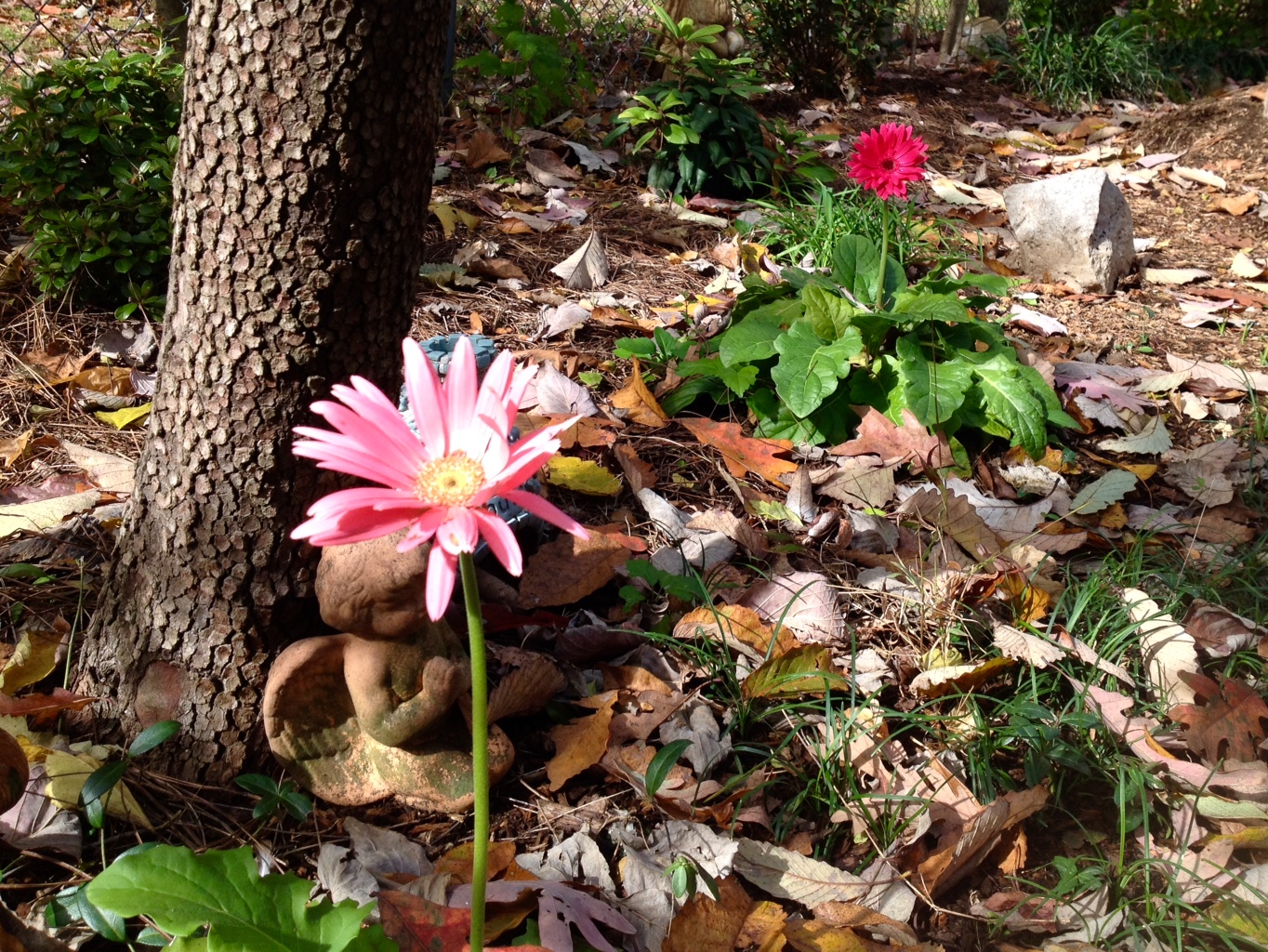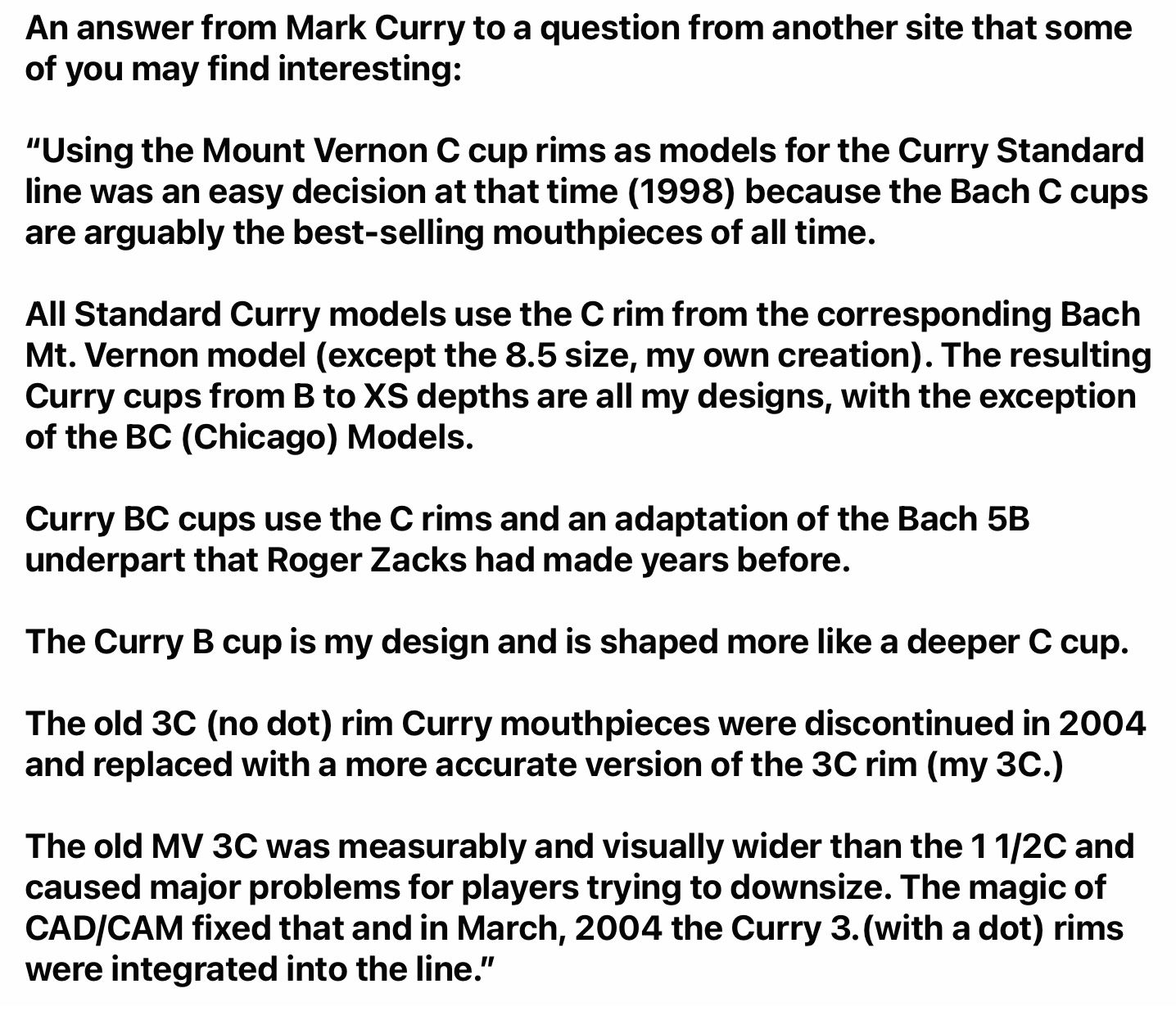I would not appreciate anyone recording me when I practice. I usually work on exercises and pieces I can’t play (or can’t play very well). That’s a big part of the path to improvement, and is not meant for public consumption. As for the warts recorded in a public performance, one of the guys in our band would say “That’s the beauty of live music.” Many audiences just appreciate the music, and a glitch here or there just shows we are all human. There are also the folks who revel in picking out mistakes, and even if the performance was 99.9% perfect, they focus on that one wrong or out of tune note, sloppy articulation, etc. Unfortunately, I used to be my own worst critic, but now I’m happy if most of what I play is good, and I have a short memory for the occasional wart. My response to critics is, if you can do better, come on up on stage and show me…
Best posts made by Dale Proctor
-
RE: The past lives on and we are judged by itposted in Lounge
-
RE: How about a "Random Meaningless Image...let's see them string"?posted in Lounge
The perfectly shaped taco chip.
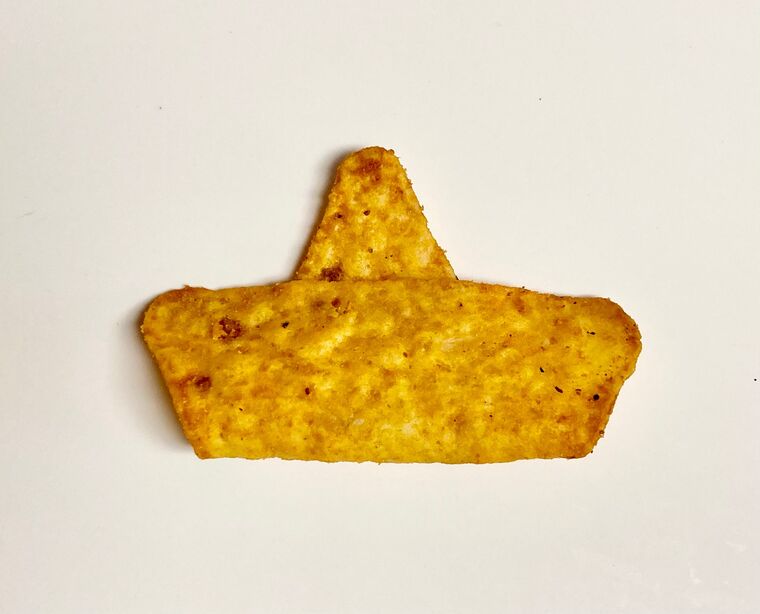
-
RE: Longest Layoffposted in Music Discussion
About 7 years, beginning after high school. The small university I attended had no music program other than choral, so I went those 4 years + 3 more without playing, mainly because of no opportunities. I then joined a local concert band someone told me about, and worked my chops back into shape by starting out on last chair and after a few years, playing the 1st solo part.
-
RE: Hello! Welcome to TB, who are you?posted in Introductions
Hello! I’m a long time cornet and trumpet (and sometimes flugelhorn) hack and ex-collector. Been playing since about 1963, played 1st trumpet in a concert band in the 1970s, was 3rd trumpet in a local semi-pro symphony orchestra for about 5 years in the 1980s, along with playing in a brass quintet and playing in the pit for numerous musicals, played Bb cornet all over the eastern U.S. in a Civil War brass band from the early 1990s until a couple years ago. We recorded one cassette tape and 4 CDs during that time, which to my surprise, sold by the thousands. I also played lead trumpet in a so-so big band for a number of years, subbed in a few more, subbed in a German band numerous times, was a founding member of a British-style brass band around 2000 and performed with them for about 15 years.
I had the privilege of recording about 20 Civil War era bugle calls on a period bugle for an interactive display at a museum in Alabama. I also participated in bands that recorded music for a couple Ken Burns PBS series, which was interesting. I played Eb cornet in a low-budget Civil War movie that went straight to DVD (lol), and also played in a Tennessee PBS special on music of the Civil War.
I retired from work (early on I worked for NASA, and then for a couple aerospace and defense contractors, but I spent the majority of my career designing fire suppression systems) at the beginning of 2020. Because most playing venues dried up due to the virus outbreak, I haven’t been doing much other than walking with my wife a lot, practicing a little, riding my vintage motorcycles, and eating healthy. When things return to normal, I play in a large church orchestra, sub in a couple big bands from time to time, play 2 or 3 Civil War gigs a year, and fill in on 2nd cornet in the brass band when needed.
There you have it - all you never wanted to know about me...

-
RE: Spit Building up in MPposted in Mouthpieces & Accessories
@adc said in Spit Building up in MP:
@Dale-Proctor said in Spit Building up in MP:
Modern long shank and modern short shank cornet mouthpieces have the same shank taper and should have the same insertion depth. I don’t know why they shouldn’t interchange with good results as well as any other mouthpieces do. Some mouthpieces work with a given cornet, while others don’t, regardless of the shank length.
Bach and Yahama have different tapers that I just noticed. Bacg goes into the shank further. Not arguing with you Dale. The short and long shank yamaha go into the shank the same distance.
The Yahama is close to an old Conn Wonder I have but not exact.
So I guess (as Fluglegirl said) that the Yahama doesn't belong into my Bach.
Yeah, I said they should have the same insertion depth. Some of them don’t, for sure. I have a newer Wick that has a really shallow insertion, a much older Wick that inserts the “normal” amount, and all the Schilkes I’ve used insert too far. So that part of the equation is a variable for sure. That’s more a function of the mouthpiece design than the horn, though.
-
RE: Bach Clubposted in Bb & C Trumpets
Ok, here are the three I own:
1976 43 ML Stradivarius Bb trumpet
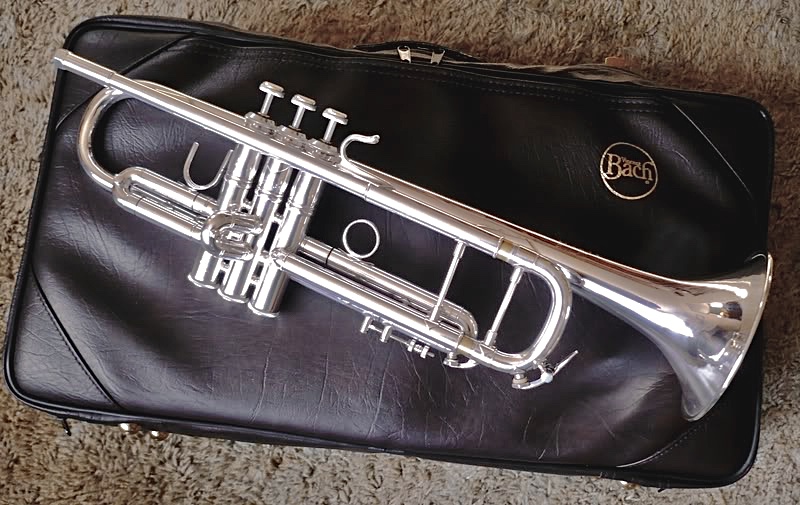
1982 239 ML Stradivarius C trumpet
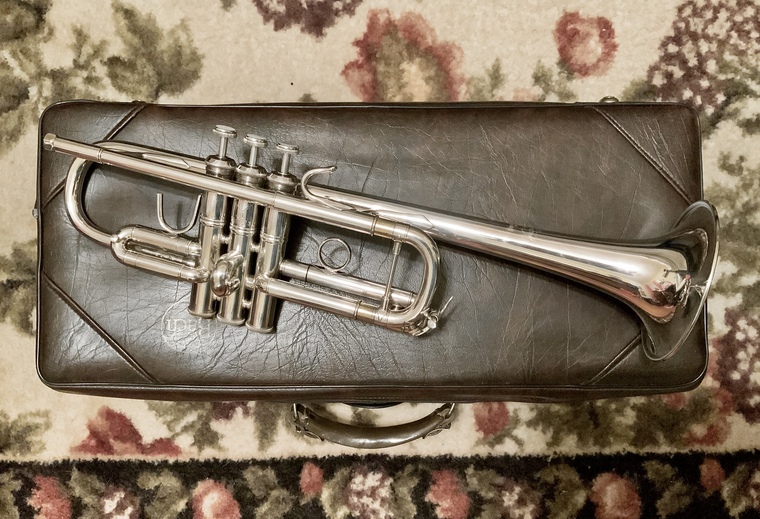
1993 184G L Stradivarius Bb cornet
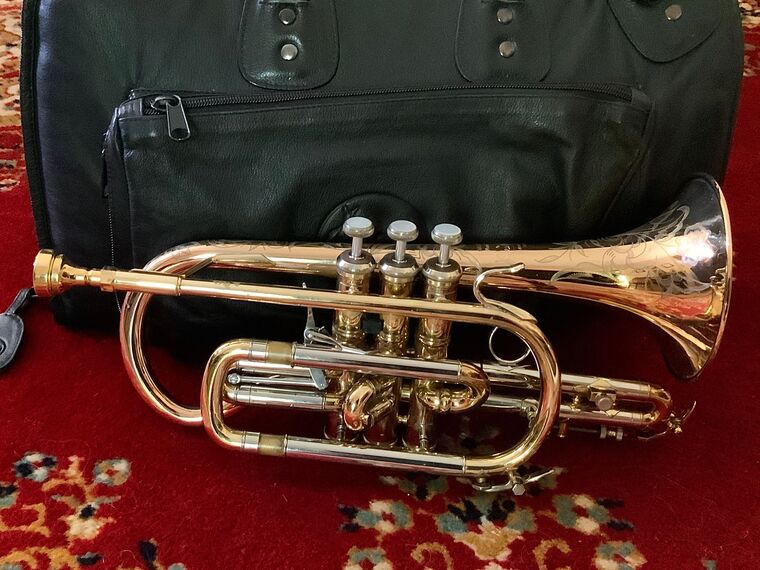
-
RE: Railroad Photographyposted in Lounge
@adc
The Virginia Creeper trail in southwestern VA is a really nice one. -
RE: Phony playersposted in Music Discussion
@BigDub said in Phony players:
On the show, Hogan’s Heroes, Colonel Klink Would occasionally play the violin, much to the discomfort of those who happened to be in the same room.
He looked rather convincing, but if you looked closely, there weren’t even any strings on the instrument!Interesting factoid - Werner Klemperer’s father was Otto Klemperer, the famous orchestral conductor.
-
RE: Hello! Welcome to TB, who are you?posted in Introductions
“Hello! Welcome to TB, who are you?“
Well, if you read this thread, you’ll know who we are. A bunch of prototypical trumpet players who have nothing better to do than argue on line... -
RE: Curry Mouthpiecesposted in Mouthpieces & Accessories
Well, I took my Bach 184 cornet and new mouthpiece to a rehearsal tonight, a large church orchestra that was meeting for the first time in 14 months. We worked on a few things for this coming Sunday, and then concentrated on patriotic music for a July 4 outdoor concert.
I always say the best way to evaluate a new horn or mouthpiece is “in the heat of battle”, and not in your safe place at home. Playing with a group, under a relentless baton will really test the intonation tendencies, crispness of articulation, endurance, range (both high and low), ease of dynamics, and flexibility of tone a mouthpiece produces.
That said, this Curry 3C. cornet mouthpiece is everything I hoped it would be for this type of playing. Yes, it’s early on in the mouthpiece honeymoon phase, but so far, so good. A good first impression is a good thing for me, because a bad first impression just about always results in a mouthpiece I eventually sell, even after giving it weeks of playing - they just never come around.
Anyway, a good time was had by all, the cornet/mouthpiece combo functioned well in a section of about 8 trumpets, and I’ll update this again after I gain a bit more experience with it.
-
RE: In Tune. With what?posted in Bb & C Trumpets
With any group, you tune to the tuning note, and then you listen as you play and play in tune with what’s happening (assuming the ensemble are all doing that). I learned the extreme example of that while playing 19th century literature with a group, all of us using 19th century brass instruments. It took a concerted group effort of knowing your instrument, lipping notes, and employing alternate fingerings to play pleasing in-tune music for the audience.
-
RE: Traits that make a great sight reader?posted in Music Discussion
I’ve found that lots of experience reading unfamiliar music, the ability to look ahead a few bars while playing, familiarity with common rhythms, having scales under your fingers as second nature, and tunnel vision levels of concentration are very helpful traits for sight reading. As far as left brain vs right brain attributes, I have no idea.
-
RE: In Tune. With what?posted in Bb & C Trumpets
@Dr-GO said in In Tune. With what?:
@ROWUK said in In Tune. With what?:
This thread will show the "foolishness" of putting "slotting" high on the list of trumpet priorities. We need flexibility to play in tune.
There is a "bible" on intonation written by Chris Leuba - a former horn player with the Chicago Symphony. I am not sure if it is still in print, but it is certainly worth having.
https://www.hornguys.com/products/a-study-of-musical-intonation-by-christopher-leuba-pub-cherry
Maybe this is my chance to be more educated with a response but is "slotting" and playing in tune the same thing?
Slotting is the tendency of a horn to center on a certain frequency on every note, and it takes more effort to lip or bend notes on them. It’s nice to know where the horn tends to go on any given note, but can be harder to compensate if it doesn’t go where you initially need it to.
-
RE: Happy 4th of July!posted in Lounge
Well, my initial post did have a vintage cornet in the photo, along with a few other band-related items. Where it went from there, I had no control over...

-
RE: Traits that make a great sight reader?posted in Music Discussion
@dr-go said in Traits that make a great sight reader?:
Add to the challenge of sight reading that most the parts I get are for C instruments, so in addition to sight reading I am also transposing the notes as I go, and trying to remember to add two sharps to the written key signature.
That’s what C trumpets are for...lol
-
RE: I Think ≠ It Is!posted in Repairs & Modifications
I pimped a couple of my Bachs with something called Resonance Enhancers, and they do seem to work...

-
RE: The New Realityposted in Classical / Orchestral
I was recently asked to participate in a pops/patriotic brass band concert as part of a Monday night concert series in a local park on July 6. No rehearsal, band members seated 6’+ apart. Should be interesting if it actually happens.
That said, I haven’t been motivated to practice much during the past few months of shutdown, so now I’m playing catchup to get back into shape by then. Second cornet, so that will be a little easier...
Pic from a previous concert - that’s mine on the left.
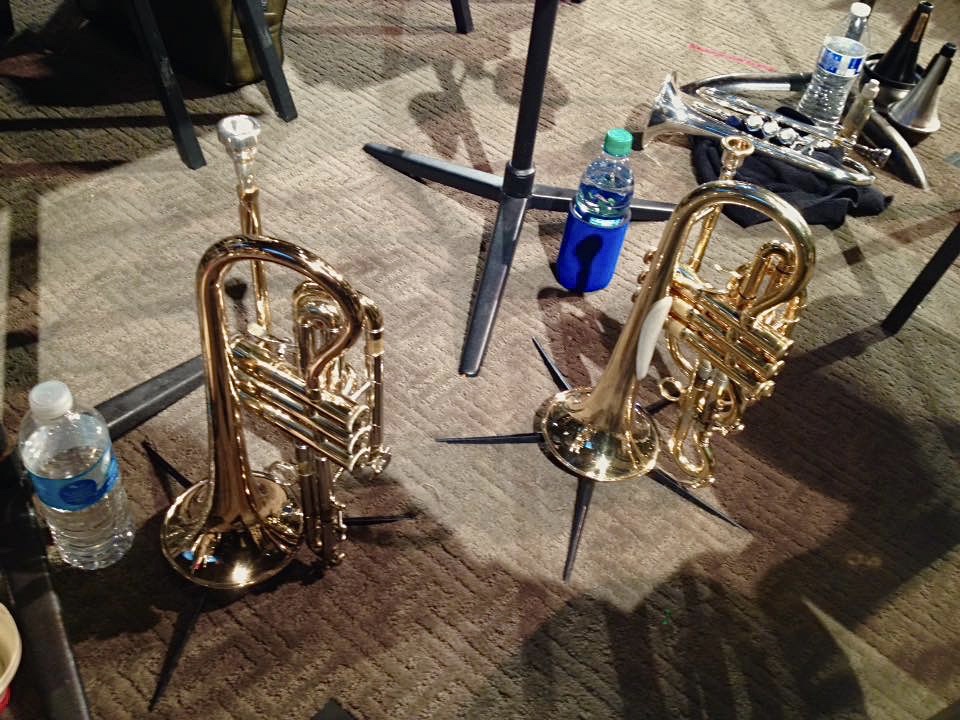
-
RE: No Name Trumpetposted in Bb & C Trumpets
To me, any instrument without a serial # or a name on the bell is a TSO (trumpet shaped object). Of course, one having that identification on it doesn’t mean it isn’t a TSO, either.
